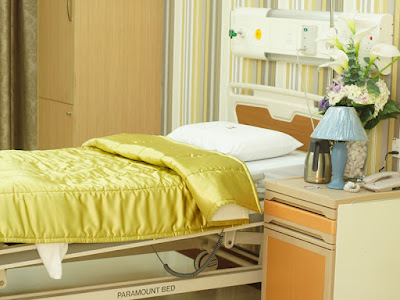Fibroids are non-cancerous tumours that arise from the womb (uterus). These growths are made up of muscle and fibrous tissue and vary in size and number. They are also known as uterine myomas or leiomyomas.
Many women are unaware they have fibroids as they do not have any symptoms. Women who do have symptoms may experience:
- heavy periods or painful periods, tummy (abdominal) or lower back pain
- a frequent need to urinate or constipation,
- pain or discomfort during sex
In rare cases, fibroids can cause significant complications, such as infertility and problems during pregnancy.
Who is Affected?
Fibroids are common, with more than 40% of women developing them at some point in their life. They most often occur in women aged 30 to 50 years. Women who have had children have a lower risk of developing fibroids, and the risk decreases further the more children you have.
Types of Fibroids -
Fibroids can grow anywhere in the womb and vary in size considerably. Some can be the size of a pea, whereas others can be the size of a melon.
The main types of fibroids are:
Intramural Fibroids
the most common type of fibroid, they develop in the muscle wall of the womb.
Subserosal Fibroids
fibroids that develop outside the wall of the womb into the pelvis and can become very large.
Submucosal Fibroids
fibroids that develop in the muscle layer beneath the inner lining of the womb and grow into the middle of the womb.
In some cases, subserosal or submucosal fibroids are attached to the womb with a narrow stalk of tissue. These are known as pedunculated fibroids.
Many women are unaware they have fibroids as they do not have any symptoms. Women who do have symptoms may experience:
- heavy periods or painful periods, tummy (abdominal) or lower back pain
- a frequent need to urinate or constipation,
- pain or discomfort during sex
In rare cases, fibroids can cause significant complications, such as infertility and problems during pregnancy.
Who is Affected?
Fibroids are common, with more than 40% of women developing them at some point in their life. They most often occur in women aged 30 to 50 years. Women who have had children have a lower risk of developing fibroids, and the risk decreases further the more children you have.
 | |
|
Fibroids can grow anywhere in the womb and vary in size considerably. Some can be the size of a pea, whereas others can be the size of a melon.
The main types of fibroids are:
Intramural Fibroids
the most common type of fibroid, they develop in the muscle wall of the womb.
Subserosal Fibroids
fibroids that develop outside the wall of the womb into the pelvis and can become very large.
Submucosal Fibroids
fibroids that develop in the muscle layer beneath the inner lining of the womb and grow into the middle of the womb.
In some cases, subserosal or submucosal fibroids are attached to the womb with a narrow stalk of tissue. These are known as pedunculated fibroids.
No comments:
Post a Comment